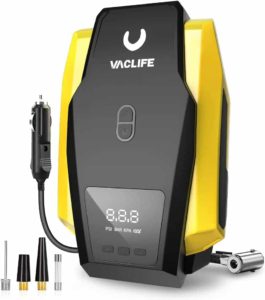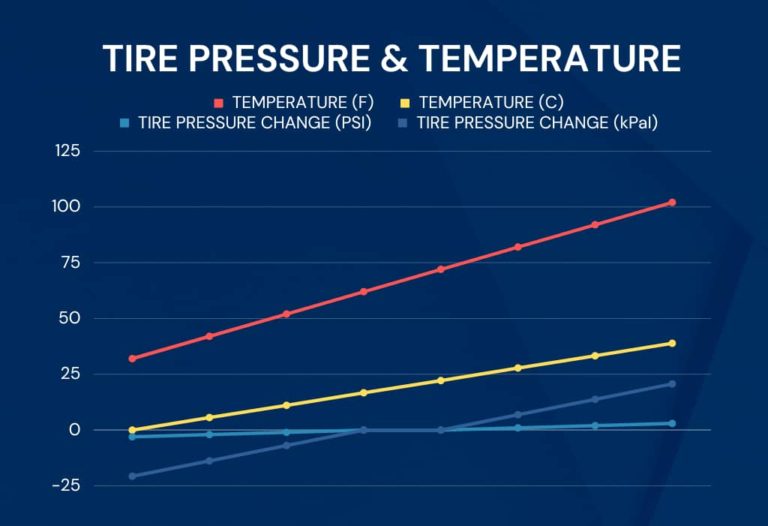What is the TPMS in the Infiniti QX60?
When the tire pressure indicator illuminates on your Infiniti QX60’s dashboard, it may be tempting to dismiss it with a sigh of frustration, thinking, “here we go again!” However, it’s crucial to comprehend the significance of this warning light. Your vehicle is equipped with a sophisticated feature known as the tire pressure monitoring system (TPMS), designed to enhance your safety while driving and ensure optimal vehicle performance. This underrated system monitors the air pressure within each tire. If it detects that the pressure in any tire is excessively high or low, it activates the tire pressure warning light on your dashboard. Additionally, the display will highlight the underinflated values in red. The Infiniti QX60 does not have a dedicated button to reset or turn off the low tire pressure light. Don’t worry, there is a simple procedure on how to reset the light.
How to Reset the Infiniti QX60 Tire Pressure Light
The Infiniti QX60 does not have a tire pressure reset button.
When the tire pressure light on your dashboard turns on OR your display reads “CHECK TIRE PRESSURE” OR “TIRE PRESSURE LOW ADD AIR” pull over slowly and check your tire pressure right away.
Park the vehicle in a safe place and turn the engine off.
Check the tire pressure in all four tires.
Adjust the tire pressure to the specified cold tire inflation pressure level. (If you have 20” wheels, set the tires to 35 Psi in the front and rear. If you have 18” wheels, set the tires to 33 Psi in the front and rear.)
The horn of your car will beep once when the pressure reaches the correct level and the hazard indicators will stop flashing. Be accurate when setting the pressures.
Turn the engine switch to the “ON” position. (this means engine off, electricity on)
Wait for the tire pressure warning light to go off. If the light does not turn off after a few minutes, drive the vehicle at a speed of at least 16 MPH (25 km/h) for at least 10 minutes.
If the light still doesn’t turn off, re-check your tire pressure to make sure they are all at the exact pressure you set them to. If the pressure has decreased, you probably have some sort of leak in that tire.
NOTE: If you’ve completed all of these steps and the tire light STILL won’t go out, There is only one of three things that can be the problem. Either have a faulty tire pressure sensor in one of your wheels OR you have a leak OR your receiver module (control unit) is not communicating with your sensors (this is the least of all likely and is rare). If the light stays on, it means that the tire pressure is not at the recommended level or there is a malfunction in the TPMS.
2023 Infiniti QX60 Tire Pressure
TIRE SIZE | FRONT PSI | REAR PSI |
255/50R20 | 35 | 35 |
255/60R18 | 33 | 33 |
SPARE TIRE | 60 | 60 |
Infiniti QX60 Tire Settings
Steps to Change the Tire Rotation Interval Schedule:
Press the “MENU” button on the control panel.
Use the touchscreen interface to select “SETTINGS“.
In the “Settings” menu, select “VEHICLE SETTINGS“.
Scroll down and select “MAINTENANCE“.
In the “MAINTENANCE” menu, select “TIRE“.
Here, you can adjust the tire rotation interval schedule according to your preference.
How to Turn Off the "Maintenance Tire" Reminder
Press the square button (□) on the steering wheel to switch to the settings mode on the vehicle information display.
Use the arrow buttons to select the “Settings” menu.
Press the square button (□) to select the “Settings” menu.
Use the arrow buttons to select “Vehicle Settings”, then press the square button (□) to select it.
Select “Maintenance” and press the square button (□) to select it.
Select “Tire” and press the square button (□) to select it.
Select “Reset” and press the square button (□) to reset the tire maintenance reminder.
How to Change Tire Pressure Units
Press the “SETTINGS” button on the control panel. (the gear icon)
Select the “Meter Settings” option.
Then select “Tire Pressure Unit”.
You can then choose between PSI, kPa, or bar as your preferred unit of measurement.
How Does the Infiniti QX60 TPMS Work?
The Infiniti QX60 tire pressure monitoring system relies on several components and technologies to function correctly. Here’s a full explanation of how this system works:
Sensors: Each tire, including the spare (in some models), has a sensor mounted inside it that constantly measures the air pressure. These sensors are part of the valve stem in each wheel. They are battery-powered and transmit data wirelessly.
Data Transmission: Each sensor operates on a unique frequency and transmits data wirelessly to the TPMS receiver, often incorporated into the vehicle’s ECU (Engine Control Unit). The sensors transmit data regularly while the vehicle is in motion. This ensures that the system can provide real-time monitoring of the tire pressures. If the vehicle is stationary, the sensors typically enter a sleep mode to conserve battery life, and they wake up when the vehicle starts moving again. The system also transmits data about the temperature inside the tire, which can influence the tire pressure.
Data Analysis: The TPMS receiver analyzes the data received from the sensors. It compares the current tire pressure to Infiniti’s recommended pressure levels.
Warning System: If the pressure in any tire drops below a specific threshold, usually about 15%-25% below the recommended pressure, the TPMS will trigger a warning light on your dashboard. On the Infiniti QX60, this is represented by a yellow exclamation mark inside a tire symbol. The system will also indicate which tire is under-inflated on your vehicle’s information display.
Maintenance and Battery Life: The battery life of the sensors is usually between 5-10 years. If the battery dies or the sensor is broken, you have to replace the entire sensor. Unfortunately, you cannot replace the dead battery without breaking the sensor.
Why is the TPMS Light Flashing?
If the tire pressure monitoring system itself is not working properly, it sets off a TPMS malfunction indicator. The indicator uses the same yellow exclamation point as the low tire pressure light. When there is a problem with the system, the light will flash for approximately 1 minute and then stay on. Basically, a blinking tire pressure light means there is a malfunction within the TPMS itself, rather than an air pressure issue. If this is happening to your QX60, we suggest either taking your car to a tire specialist OR using a TPMS diagnostic scan tool to determine which sensor is the problem.
What Causes it?
Electronic devices or facilities that use similar radio frequencies can interfere with the TPMS and cause it to malfunction. This can be anything from a radio to an alarm system of the store across the street.
If your car windows have a heavy tint, it might mess with the radio signals that pass between the TPMS sensors and the receiver.
Using non Infiniti wheels or tire sizes.
If there is lots of snow or ice on or around the tire valves.
If the tire pressure is extremely high.
If wheels without tire pressure sensors are installed on the car, such as the spare tire.
If new tire pressure sensors are installed without registering the new sensor IDs with the QX60’s receiver module/ECU.
Why is the Tire Light On?
Seasonal temperature changes: A drop in ambient temperature can cause tire pressure to decrease, triggering the warning light.
Tire puncture or leak: A sharp object or road debris like a nail or screw may puncture a tire, causing air loss which will activate the warning light.
Faulty tire pressure sensor: Damaged or malfunctioning sensors may provide inaccurate readings, resulting in a false alert. The only way to determine which sensor is faulty is to scan each sensor with a TPMS diagnostic tool.
Valve stem issues: A damaged or leaking valve stem can lead to gradual pressure loss and eventual activation of the tire pressure light. They make repair kits to replace the rubber gasket that usually goes bad.
Tire damage: Impact from potholes or hitting a curb can cause structural damage like tire bubbles, leading to pressure loss.
Sensor battery life: TPMS sensors are battery-powered, and over time, batteries die. (they usually last anywhere from 5-10 years) This will cause the tire pressure light to turn on.
Recent tire rotation or replacement: If the tires have been recently rotated or replaced, the TPMS may need recalibration to avoid false alerts. Sometimes the vehicle’s computer may think the front tires are in the rear and rear in the front after a rotation.
Wheel or rim issues: Damaged, corroded, or cracked wheels or rims can lead to air leaks and pressure loss. This is very common with low profile tires.
Altitude changes: Climbing or descending in elevation can affect tire pressure and trigger the TPMS warning. An additional 1.5 Psi per Km above sea level is required.
Natural pressure loss: Tires lose air pressure over time due to temperature changes and permeation. Tire dry-rot will happen to tires that sit.
Electrical problems or software issues within the car’s TPMS system. Occasionally the system may have a software update from Infiniti.
Snow Tires: If you have a separate set of wheels/rims for snow tires, either swap over the sensors from your summer wheels or purchase a second set of 4 sensors for the second set of wheels/rims. If you are using one set of wheels for both sets of tires, do not worry about this.
What are the Effects of Underinflated or Overinflated Tires?
It’s really important to keep the right amount of air in your Infiniti QX60’s tires. This is not just for safety, but also to make sure your car runs properly. Having too little or too much air in your tires can cause different problems.
Underinflated Tires:
Increased Tire Wear: Underinflated tires will cause your tire to wear prematurely, especially on the edges of the tread.
Decreased Fuel Efficiency: Underinflated tires increase rolling resistance, which will reduce fuel efficiency.
Poor Handling: Underinflated tires can negatively affect the QX60’s handling and braking, making it harder to control.
Overheating Risk: Underinflated tires will overheat, which can lead to tire failure and accidents.
Overinflated Tires:
Decreased Traction: Overinflated tires reduce the tire’s contact with the road. This can lead to decreased traction and increased risk of hydroplaning in wet conditions.
Increased Wear in the Center: Overinflation will cause the center of the tire to wear faster than the edges of the tread.
Harsher Ride: Overinflated tires are harder and less flexible which can lead to a harsher and louder ride because they absorb less impact from bumps and potholes.
Increased Risk of Damage: Overinflated tires are more susceptible to damage from road hazards like potholes and debris. You are also more likely to damage your Infiniti’s suspension.
Does the Weather Affect Tire Pressure?
In the Infiniti QX60, weather conditions can significantly impact tire pressure. During colder months the air inside the tires contracts, which can lead to a decrease in tire pressure. This is why your Tire Pressure Monitoring System (TPMS) may alert you of low tire pressure on particularly cold mornings. On the flip side, in warmer weather, the air inside the tires expands. This will potentially cause an increase in tire pressure. It’s important to regularly check your tire pressure and adjust it as necessary, especially when there are significant changes in weather. Keep in mind: for each 10-degree drop in temperature, your tire pressure will drop by about 1 Psi.
How to Check & Adjust Tire Pressure:
Locate the Tire Information Placard: This is the sticker found on the driver’s side door jamb. Depending on the size of your tires, either 33 Psi or 35 Psi. Check the chart above to match your tires sizes.
Purchase a Tire Pressure Gauge: If you don’t already have one, you’ll need a tire pressure gauge to check the pressure in your tires.
Check the Tire Pressure: Remove the valve cap from one of your tires, then press the tire pressure gauge onto the valve stem. The gauge will show the pressure reading.
Compare the Reading to the Recommended Pressure: Check the reading on the gauge and compare it to the recommended tire pressure.
Adjust the Tire Pressure if Necessary: If the tire pressure is not at the recommended level, adjust it. Add air if the pressure is too low, or let some out if it’s too high. If the pressure is too high, let out some air by pressing the metal stem in the center of the tire valve. You can use any object like a screwdriver to do this. Be gentle.
Replace the Valve Cap: Once the tire pressure is at the correct level, replace the valve cap. This protects the valve stem and prevents air from leaking out and dirt from getting in.
Repeat for All Tires: Repeat these steps for all four of your tires.
What is "Cold Tire Pressure"?
To get accurate tire pressure readings on your Infiniti QX60, check the pressure when the car hasn’t been driven for a while, ideally in the morning. This is known as “cold pressure“. Try to let your car sit for about 3 hours before checking. If you need to drive to an air pump to fill your tires, keep the trip very short, preferably less than a mile. Driving warms up your tires and the air inside them expands, which can give an inaccurately high reading. So, avoid checking tire pressure when your tires are hot to prevent overinflation.
Conclusion
In conclusion, the tire pressure monitoring system (TPMS) in your Infiniti QX60 is a vital feature that ensures your safety and optimizes your vehicle’s performance. It’s crucial to understand how it works, how to reset it, and how to maintain the correct tire pressure. Remember, weather changes and driving conditions can affect tire pressure, so regular checks are essential. Keep your tires in tip top shape, and your Infiniti QX60 will thank you with a smooth, efficient, and safe ride! Everything in this article is applicable to all Infiniti QX60 models and trims. This includes all FWD and AWD drivetrains and the following models: QX60 PURE, QX60 LUXE, QX60 SPORT, QX60 SENSORY and QX60 AUTOGRAPH.
Please note that this blog post contains Amazon affiliate links. This means that if you make a purchase through one of these links, we at TPMSRESET.com may earn a small commission at no extra cost to you. We only recommend products that we personally use and believe in. Thank you for supporting us.






